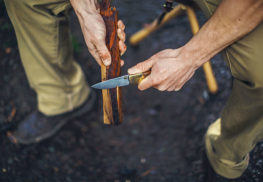Francolin

We leave scars on the land that never quite go away. Some change the land for better and some for worse. Farmers plow, plant, and build. Miners peel back the layers. Subsistence peoples hunt and gather and record their passages inside caves and on rock walls. Their stories are found in the hunts that connect the past to the present, and, I suppose, the past to the future. In South Africa, they came from Holland, the Netherlands, Germany, and Ireland. They were called the Boer, a word that means farmer, but it also means so much more.
On one South African farm we found an old British barracks hewn from native rock. Now the grass pushes up where the earthen floor once spread. This was on the first day of our safari with Wighardt van der Gryp. We were in the Orange Free State for a couple days of sport and adventure. This was not our first time in the country, at least not for my friend Brian Smith and me. But for Brian’s son, Mason, Sam Pyke from Oregon, and Jim Linder from North Carolina, this was a first safari. Mason, Jim, and I carried shotguns, while Sam and Brian shot with cameras. We had a companion with us, a gentle greyhound named Sissy—not the usual dog for a bird hunt.
Last winter brought more rain to South Africa than usual and everywhere the grass was taller and the cover was thicker than when I’d seen it last. We surprised a covey of francolin (a game fowl similar to partridge or quail in the U.S.) in the road and dismounted. Mason took the left flank and Jim the right. I turned to look for Wighardt. He has a sense for these things.
SHARE ON
You may also like
This portable piece is handcrafted to last a lifet...
These shot glasses are hand crafted and feature an...
This Filson Folding Knife is handmade in Seattle w...



























